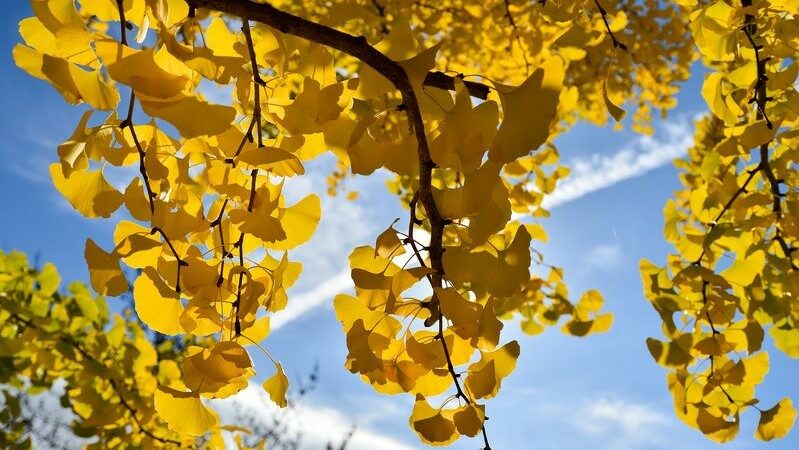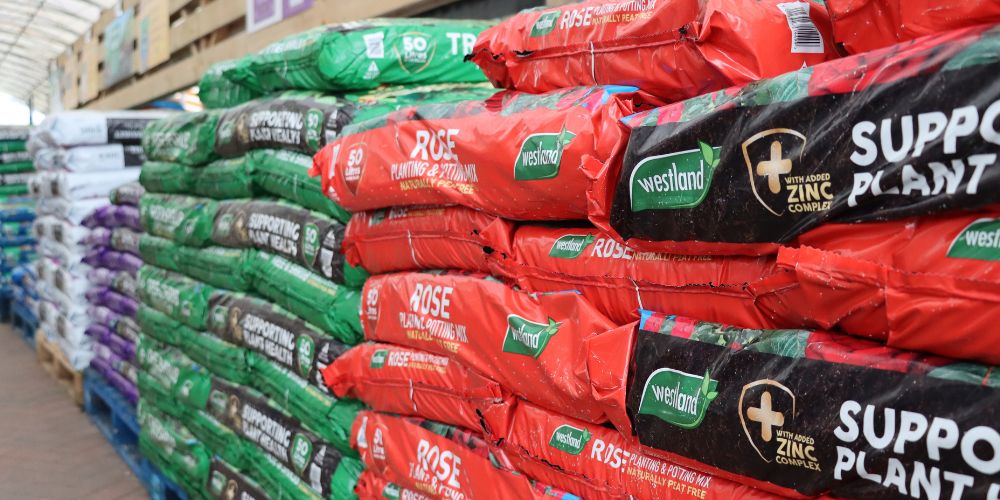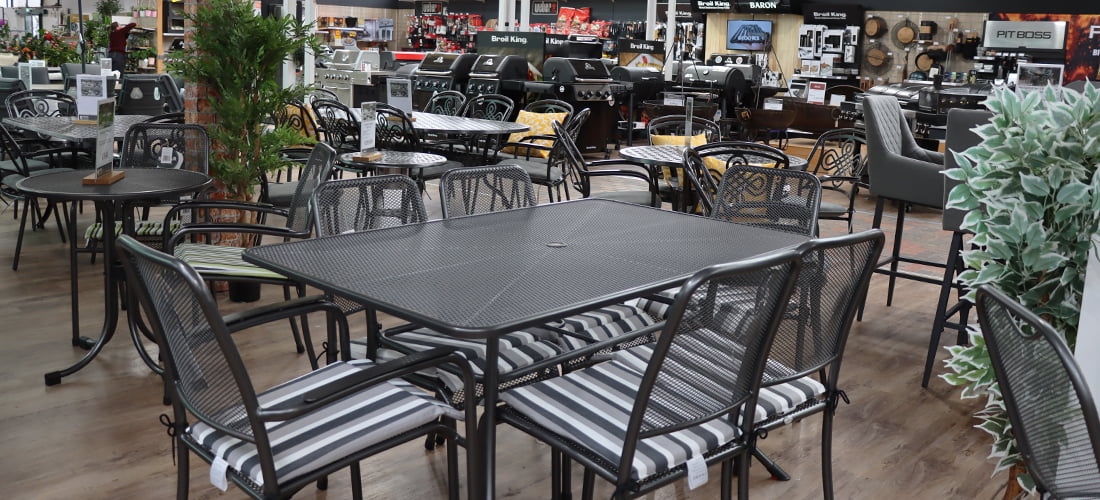Many of the plants mentioned below can be viewed on our Plant Finder.
AUTUMN INTEREST
SHRUBS WITH AUTUMN LEAF INTEREST
- Acer (Japanese Maple): many varieties boasting spectacular autumn colour.
- Amelanchier canadensis (Snowy Mespilus): Shrub/tree – sharply toothed leaves have soft red not yellow tints.
- Azalea: All deciduous forms have rich coloured leaves from yellow to crimson.
- Berberis: Deciduous forms have autumn leaves of red, pink and orange shades.
- Evergreen forms B. darwinii and B. verruculosa have some red leaves.
- Callicarpa bodinieri ‘Giraldii’: Narrow leaves are tinged a violet colour in autumn.
- Ceratostigma: several varieties turning varying shades of red in autumn.
- Cornus (Dogwood): Varying degrees of red, orange and purple in autumn, depending on variety.
- Cotoneaster: Deciduous forms tend to have leaves that colour up before falling, notably: C. franchetii: Bright orange shades. C. simonsii: Small leaves turn red and scarlet.
- Enkianthus campanulatus: Brilliant red leaves.
- Euonymus: Deciduous forms have autumn colours, mainly reds and yellows.
- Fothergilla: ‘Hazel’ like leaves give ‘sunset’ tints.
- Gaultheria procumbens: ‘Creeping’ leaves go red.
- Hamamelis (Witch Hazel): H. Jelena: Orange, red and scarlet hues. H. Mollis: Yellows. H. Pallida: Yellowish brown hues.
- Hydrangea: Leaves often blotch red notably in H. Preziosa which has dark red leaves.
- Mahonia: Leaves flush red/purple unpredictably by variety dependent on growing conditions.
- Nandina domestica (Firepower): Leaves stained with red when young, turning purple in autumn.
- Osmunda (Royal Fern): Copper fronds.
- Parrotia persica: Hues of amber, crimson and gold.
- Rhus typhina: (Stags Horn Sumach): Fern like leaves turn orange and red.
- Ribes (Flowering Currant): R. alpinum: Orange shades. R. odoratum: Colours richly to yellow hues.
- Spiraea prunifolia ‘Plena’: Foliage of red shades.
- Vaccinium (Bilberry): Brilliant red autumn leaves.
- Viburnum: Many deciduous varieties have purple, red, orange or yellow leaves.
CLIMBERS WITH AUTUM LEAF INTEREST
- Cotoneaster horizontalis: Dark green leaves turn bright red.
- Parthenocissus (Virgina Creepers): All varieties are grown principally for their red/scarlet autumn leaves.
- Vitis (Grapevines): Many varieties have brilliant orange, crimson or purple leaves.
CONIFERS WITH AUTUMN LEAF INTEREST
- Cryptomeria japonica ‘Elegans’: Very attractive copper-bronze hues in autumn and winter.
- Larix (Larch): Yellow leaves
- Taxodium (Swamp Cypress): Bronze in autumn.
TREES WITH AUTUMN LEAF INTEREST
- Acer: Many varieties boast spectacular colour, including red, gold, orange and yellow.
- Betula (Birch): Most forms colour to yellow-orange.
- Carpinus (Hornbeam): Gold and orange leaves.
- Cercidiphyllum (Katsura Tree): Leaves turn smoke pink, red or yellow – best on lime free soil.
- Crataegus (Hawthorn): C. Lavallei: Colours late in autumn to red. C. Pruniflia: Orange and scarlet tones early.
- Fagus (Common Beech): Most forms go yellow or brown.
- Fraxinus (Ash): F. excelsior ‘Jaspidea’ (Golden Ash): Turns clear yellow. F. oxycarpa ‘Raywood’: Plum purple in autumn.
- Ginkgo (Maidenhair Tree): Soft green turning yellow.
- Koelreuteria paniculata: Pinnate leaves turn yellow.
- Liquidambar (Sweet Gum): Crimson and gold.
- Lirodendron (Tulip Tree): Bright gold leaves.
- Malus tshonoski (Ornamental Crab Apple): Spectacular hues of bronze, crimson, orange, purple and yellow.
- Parrotia persica: Red, orange and gold leaves.
- Populus alba (White Poplar): White woolly leaves turn yellow in autumn. P. serotina ‘Aurea’: Leaves brighten to golden yellow.
- Prunus (Ornamental Cherry): Many varieties colour to varying shades of orange and red.
- Pyrus calleryana ‘Chanticleer’ (Ornamental Pear): Red or maroon leaves held late.
- Quercus (Red Oak): Scarlet on lime free soil otherwise yellow or brown.
- Robinia pseudoacacis: Yellow leaves.
- Sorbus aucuparia ‘Asplenifolia’ and ‘Cashmiriana’: Fern-like foliage turns bright red.
SHRUBS WITH AUTUMN BERRIES INTEREST
-
- Amelanchier canadensis (Snowy Mespilus): Crimson fruit ripening to black as early as June.
- Arbutus unedo (Stawberry Tree): Ornamental orange-red ‘strawberries’, insipid but edible.
- Aucuba japonica: Bright scarlet berries on female plants (needs a partner).
- Berberis: Most forms have black/purple berries.
- Callicarpa ‘Profusion’: Violet coloured berries.
- Chaenomeles (Flowering Quinces/Japonica): All bear edible fruit, ideal for jam making.
- Clerodendron (Glory Tree): China-blue berries.
- Colutea arborescens (Bladder Senna): Bladder like pods follow bright yellow flowers.
- Cornus: Blue tinted white berries (not C. mas).
- Corylus avellana (Common Hazelnut): Produces hazelnuts.
- Cotoneaster: Most have prolific berries – red/yellow.
- Daphne mezereum: Scarlet berries up bare stems.
- Dorycnium hirsutum: Red tinged pods.
- Euonymus: Deciduous forms have red or pink poisonous ‘fruits’.
- Gualtheria procumbens: Bright red berries
- Hippophae rhamnoides (Sea Buckthorn): Masses of translucent orange-red berries.
- Hypericum androsaemum: Black berries. H.forrestii: Rich bronze coloured seed pods.
- Ilex (Holly): Red, orange or yellow berries according to type (needs a partner).
- Mahonia: All forms have decorative black berries.
- Osmanthus decora: Purple-black berries.
- Pernettya mucronata: Bright pink, white or dark red berries – needs Male: P. masculata
- Pyracantha (Firethorn): Shrub forms have bright red berries.
- Rhamnus frangula: Red fruits, changing to black.
- Rhus typhina (Stags Horn Sumach): Female plants have crimson spikes of small fruit.
- Rosa rugosa: Rose, ideal for hedging, grown principally for its decorative red hips
- Ribes odoratum: Black ‘currants’
- Rubus calcycidinoides: Scarlet fruited ground cover. R. Darts ‘Ambassador’: Strawberry-like fruit.
- Ruscus aculeatus (Butcher’s Broom): Leaves bearing red berries in their centres.
- Sambucus (Elder): Red or black berries in clusters.
- Skimmia: Female forms S. Japonica Foremanii & Rubella have red berries (needs a partner).
- Stansvaesia davidiana: Red fruits in Autumn.
- Symphoricarpus (Snowberry): White, pink or carmine berries according to variety.
- Vaccinium (Bilberry, Blueberry, Cranberry, Whortleberry): Large coral edible fruits.
- Viburnum: Many colours of berry possible, from bright turquoise-blue, red, yellow.
- Vitis (Vine): Largely ornamental although wine and dessert grape varieties are edible.
- Self Heal
- Teasel – seedheads are a favourite food of Goldfinches.
- Wild Strawberry
CLIMBERS WITH AUTUMN BERRIES INTEREST
- Celastrus (Bittersweet): Seed capsules reveal glistening orange-yellow and scarlet fruits.
- Chaenomeles: Climbing forms of shrubs with quinces.
- Cotoneaster: Climbing forms of shrubs with bright red berries especially C. Horizontalis.
- Lonicera (Honeysuckle): Many varieties have bright red berries.
- Passiflora (Passion Flower): Orange coloured egg-shaped fruits in sunny warm position.
- Pyracantha (Firethorn): Red, orange/yellow berries.
- Solanum (Chilean Potato Tree): Both S. glasnevin and S. album have ‘Deadly Nightshade’ red berries.
CONIFERS WITH AUTUMN BERRIES INTEREST
- Taxus: Particularly T. baccata (Common Yew) have some red bell-shaped berries.
TREES WITH AUTUMN BERRIES INTEREST
- Catalpa (Indian Bean Tree): Pendant seed pods like runner beans but not edible.
- Crataegus (Hawthorn or May Blossom): Long persisitng red, orange or crimson berries.
- Gleditsia (Honey Locust): Long, twisted pods.
- Malus (Ornamental Crab Apple): The best ‘dual-purpose’ trees for spring blossom and autumn fruits. Range from yellow to dark red.
- Mespilus ‘Medlar’: Rounded and flattened fruit.
- Sorbus aucuparia (Mountain Ash or Rowan): Red, orange or pink flushed white berries. The darker the berries the more attractive they are to birds. S. aria (Whitebeam): According to variety – cherry red, orange or yellow fruits.
WINTER COLOUR
Cold weather and particularly frost, causes the water in plant cells to freeze, damaging the cell wall. Frost damaged plants are easy to spot – their growth becomes limp, blackened and distorted. Evergreen plants often turn brown and the leaves of tender plants take on a translucent appearance. Hardy plants and tough evergreens can also be damaged by prolonged spells of severe cold when soil becomes frozen. Roots are unable to take up water and plants die from lack of moisture. Periods of cold, frosty weather during April and May can also kill blossom and damage fruit.
MINIMISING DAMAGE
DAMAGED PLANTS
If your plants do get frosted this doesn’t necessarily mean the end for them: many plants will recover given time. However, there are ways of minimising the damage – protect them from the morning sun, which can damage growth if the plant defrosts too quickly. If you can’t move the plants, try covering them with a layer of black plastic to block out the sun. Cut back frosted growth in spring to a healthy, new bud, to prevent further die back and encourage plants to produce fresh new shoots. Feed damaged plants with a balanced fertilizer (one with equal amounts of Nitrogen, Phosphorus and Potassium) to encourage strong, healthy growth. Dig up small, tender plants and take them into the greenhouse. Many will quickly produce new growth and recover, provided they are not subjected to prolonged periods of heavy frost, wet or cold. Newly planted specimens will often lift themselves proud of the soil surface if there is a hard frost straight after planting. Check them regularly and re-firm the ground around them to ensure their roots are always in contact with the soil
PROTECTING PLANTS
DEALING WITH SNOW
- The benefit of snow is that it acts as an insulator, protecting plants from the cold and frost. However, a heavy layer of snow can also cause leaves and branches to break, so it is important to know how to deal with it when it arrives. Shake excess snow from the branches of large trees, shrubs and hedges, to prevent them from becoming disfigured by the weight. Remove heavy deposits of snow from the roofs of greenhouses or cold frames to let in the light and prevent the structures from bending under the weight. Use lengths of string to support the branches of conifers and stop them being pulled out of shape. Branches that move away from the main plant will not spring back into place when the snow melts. Avoid walking on snow-covered grass as it will damage the turf beneath and leave unsightly marks on the lawn. It can also encourage the growth of fungal diseases which thrive in the cool damp conditions.
TREES WITH WINTER INTEREST-FRUIT
- Ilex x altaclarensis ‘Lawsoniana’
- Malus: M. ‘John Downie’, M. x zumi ‘Professor Sprenger’, M. x robusta ‘Red Sentinel’
- Photinia davidiana
- Sorbus S. cashmiriana, S. commixta, S. forrestii, S. ‘Joseph Rock’, S. scalaris
TREES WITH WINTER INTEREST-BARK
- Acer: A. griseum, A. palmatum ‘Sango-Kaku’
- Arbutus menziesii
- Betula utilis var.jacquemontii
- Eucalyptus pauciflora
- Prunus: P. maackii, P. serrula
- Salix babylonica var. pekinensis ‘Tortuosa’
SHRUBS WITH FLOWERS FOR WINTER INTEREST
- Chimonanthus preacox
- Cornus mas Daphne bholua ‘Jacqueline Postill’
- Erica carnea ‘Springwood White’
- Hamamelis x intermedia
- Lonicera x purpusii ‘Winter Beauty’
- Mahonia x media ‘Charity’
- Sarcococca hookeriana var. digyna
- Viburnum: V. x bodnantense ‘Dawn’, V. tinus ‘Eve Price
SHRUBS WITH ORNAMENTAL STEMS FOR WINTER INTEREST
- Cornus: C. alba ‘Sibirica’, C. stolonifera ‘Flaviramea’
- Corylus avellana ‘Contorta’
PERENNIALS WITH FLOWERS FOR WINTER INTEREST
- Adonis vernalis
- Crocus
- Cyclamen
- Eranthia hyemalis
- Galanthus nivalis
- Helleborus foetidus
- Helleborus niger
- Iris unguicularis
- Narcissus
PERENNIALS WITH FOLIAGE FOR WINTER INTEREST
- Arum italicum
- Bergenia
- Epimedium x rubrum
- Sasa veitchii
PERENNIALS WITH SEED HEADS FOR WINTER INTEREST
- Achillea filipendulina
- Echinops ritro
- Gypsophila paniculata
- Miscanthus sinensis
- Monarda
- Phlox paniculata
- Phlomis tuberosa
- Phormium tenax
- Nassella tenuissima








